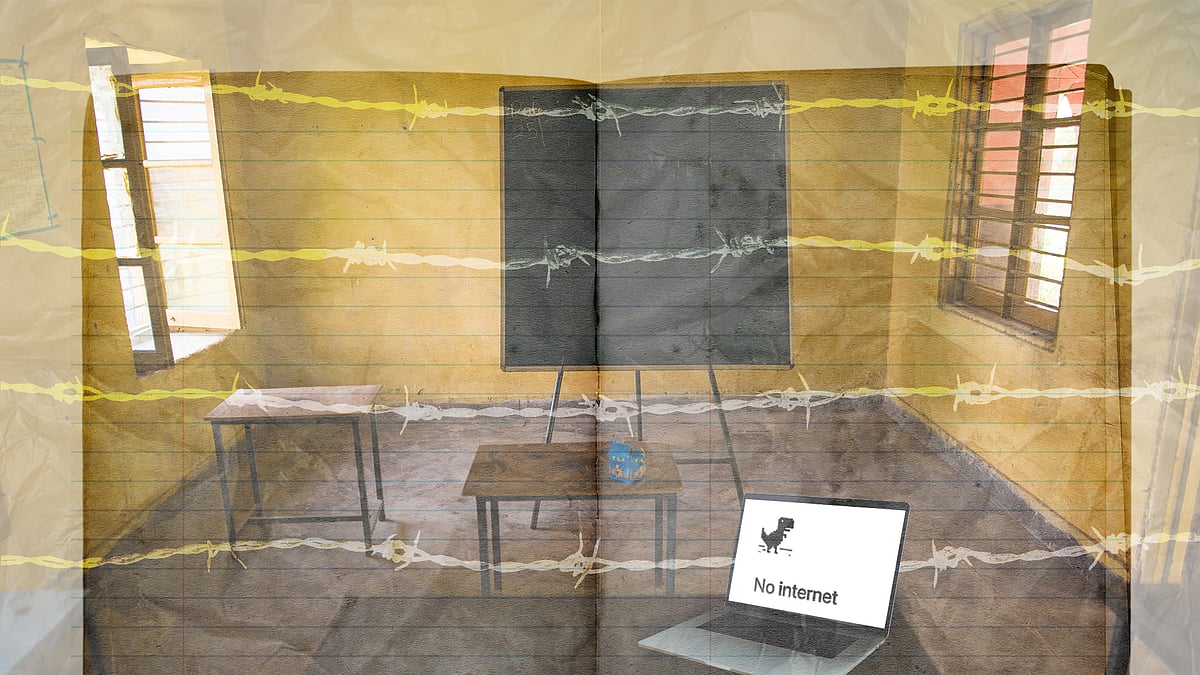Online learning disadvantages poor students. India must find alternative solutions
In an exclusionary society, it’s important to look for novel solutions to the problem of education.
According to Unicef, the closure of educational institutions because of the coronavirus pandemic has affected over 1.57 billion students in 190 countries. The educational setup has moved online overnight. In India, the human resource development ministry last week directed the National Council of Educational Research and Training to formulate new guidelines for online classes in order to reduce “physical and mental pressure” on students without compromising learning outcomes.
While the ministry is devising ways to “revolutionise” online learning, a vast population of students still has no access to a smartphone, let alone an active internet connection.
On Tuesday, a schoolgirl in Kerala killed herself, apparently after being unable to attend online classes. “The family was financially very strained and the girl was worried she would not be able to study further, or that her studies would be affected. Initial reports suggest she was upset about not having access to TV or online classes since they started,” a senior police official told NDTV.
In Jharkhand, similarly, most students who attend public schools do not have access to computers. Ashish Mahto, a student of Gayatri Shiksha Niketan in Seraikela Kharsawan district, doesn’t have a laptop. “Teachers are under the notion that everyone must have a computer by now,” he complained.
Anita Maity, a student of Kerala Public School, Gamharia, in the same district, has one smartphone at home that is used by her father. “I always miss my classes because he’s away working in Uttar Pradesh most of the time,” she said.
Om Kashyap, who studies in class 4 at DAV School, Adityapur, does have access to a networked computer. But he finds joining and attending classes on Google Meet hard. “My father is a doctor who is mostly out working,” he said. “Nobody helps me.”
According to the National Sample Survey, 2017-2018, there are less than 27 per cent Indian households that have at least one member with access to the internet. Among the poorest 20 percent households, only 2.7 percent have a computer and less than nine percent have access to the internet.
On April 21, HRD minister Ramesh Pokhriyal launched 1,900 Swayam courses and 60,000 Swayam Prabha TV videos, translated in 10 regional languages, to encourage self-learning. The Jharkhand government started broadcasting online classes on DD Jharkhand soon after.
So, can learning through television be an alternative to online classes?
According to a survey by the Broadcasting Audience Research Council, only 66 percent of Indian households own a TV set. Clearly, then, learning through TV isn’t an inclusive solution either.
Online learning has another downside. A 2013 study analysed the difference between reading linear texts on paper and on a screen. It concluded that students who read on paper secured better grades than students who read on screen. That was because touching paper and turning pages aided memory.
Optometrist Christine W Sindt said about the computer vision syndrome that about 75 percent of the people who work on computers are affected by it. She explained that this might be due to the decreased blink rate associated with screen exposure. It increased the amount of light entering the eyes and could cause dryness or a burning sensation. Another reason might be the redraw or refresh rate of the monitors set at 60 Hz. This speed could cause a flicker that forces the eyes to refocus and, in turn, tires the visual system.
Looking at the alternatives
To find more inclusive and equitable solutions to such issues, the HRD ministry should approach students, teachers and parents for their views. The new culture of distance learning is based on the assumption that the conditions and experiences of every household or student are linear. They certainly aren’t. Therefore, the state should acknowledge the different dynamics of our society to bring forth novel solutions.
Not only students, even educators have expressed concerns about online classes. Many of them feel they don’t produce the desired learning outcomes. They are also apprehensive about the commercialization of the newly introduced methods of learning.
In the absence of a classroom environment to aid learning, parents should take the responsibility for their children and use everyday conversations to disseminate information and promote learning.
Arghya is a freelance journalist in Jharkhand.
 ‘When your life is at stake, education takes a backseat’: For Kashmir’s students, lockdown adds to the misery
‘When your life is at stake, education takes a backseat’: For Kashmir’s students, lockdown adds to the misery
 Pandemic fallout: Why online classes and exams are exclusionary
Pandemic fallout: Why online classes and exams are exclusionary